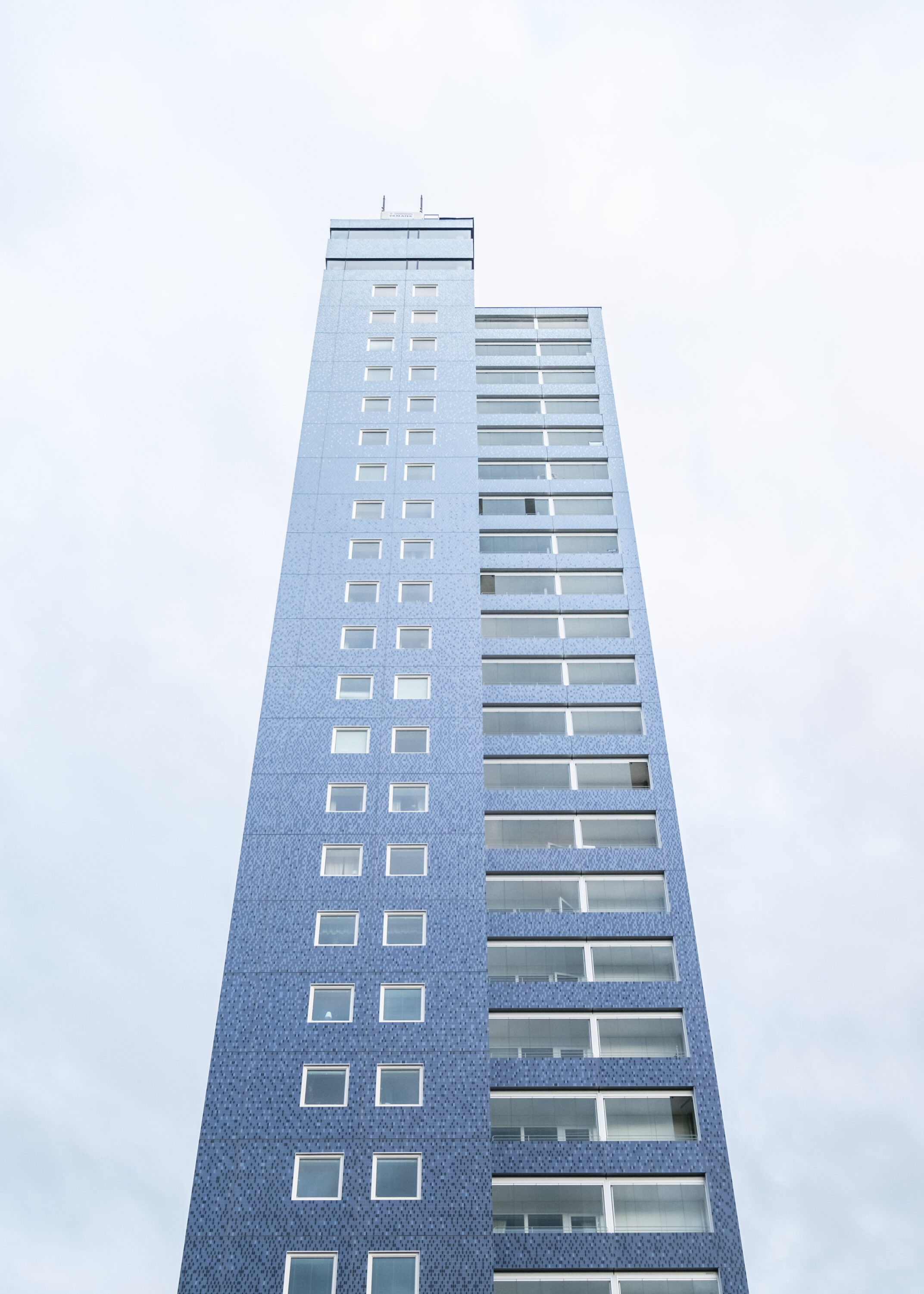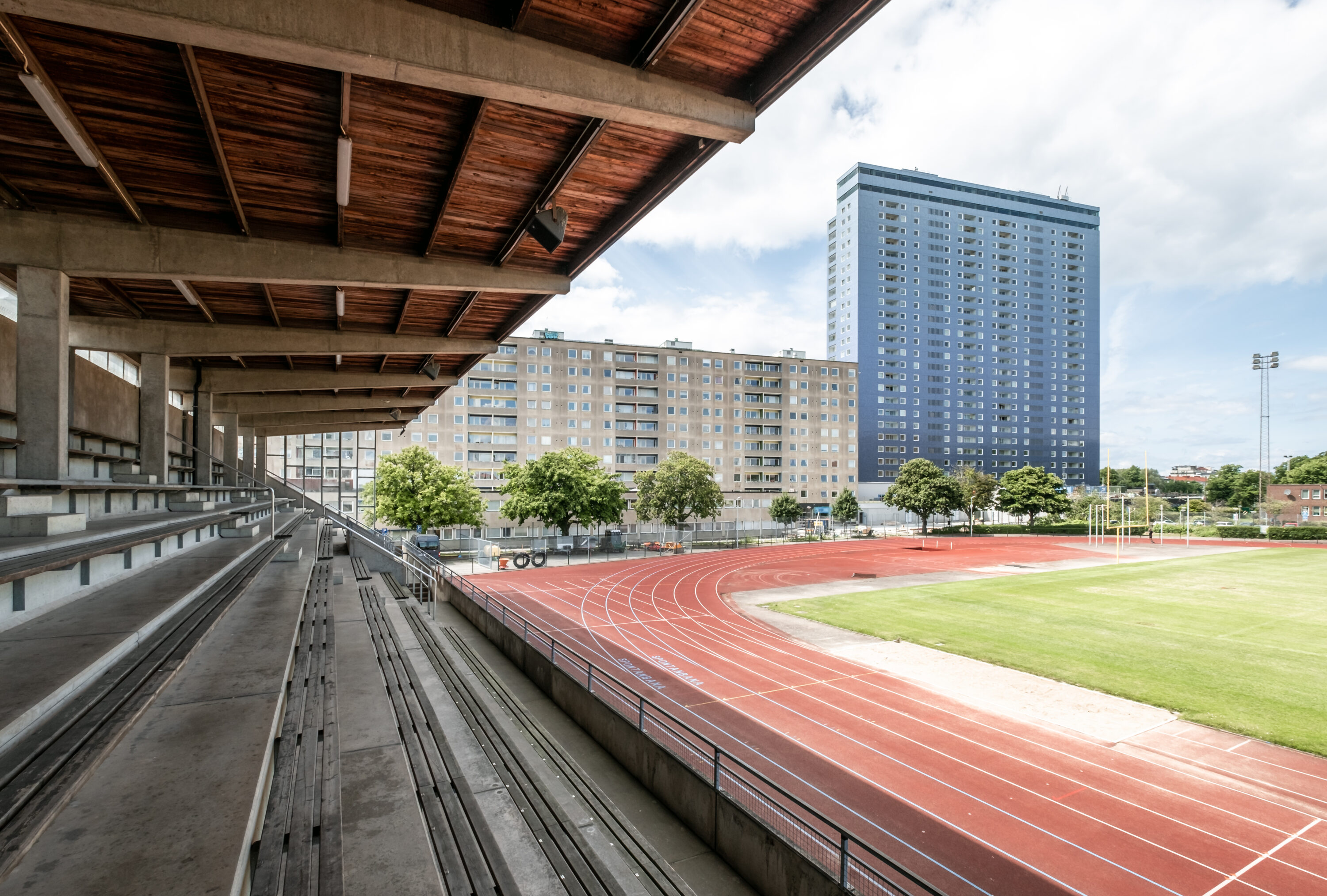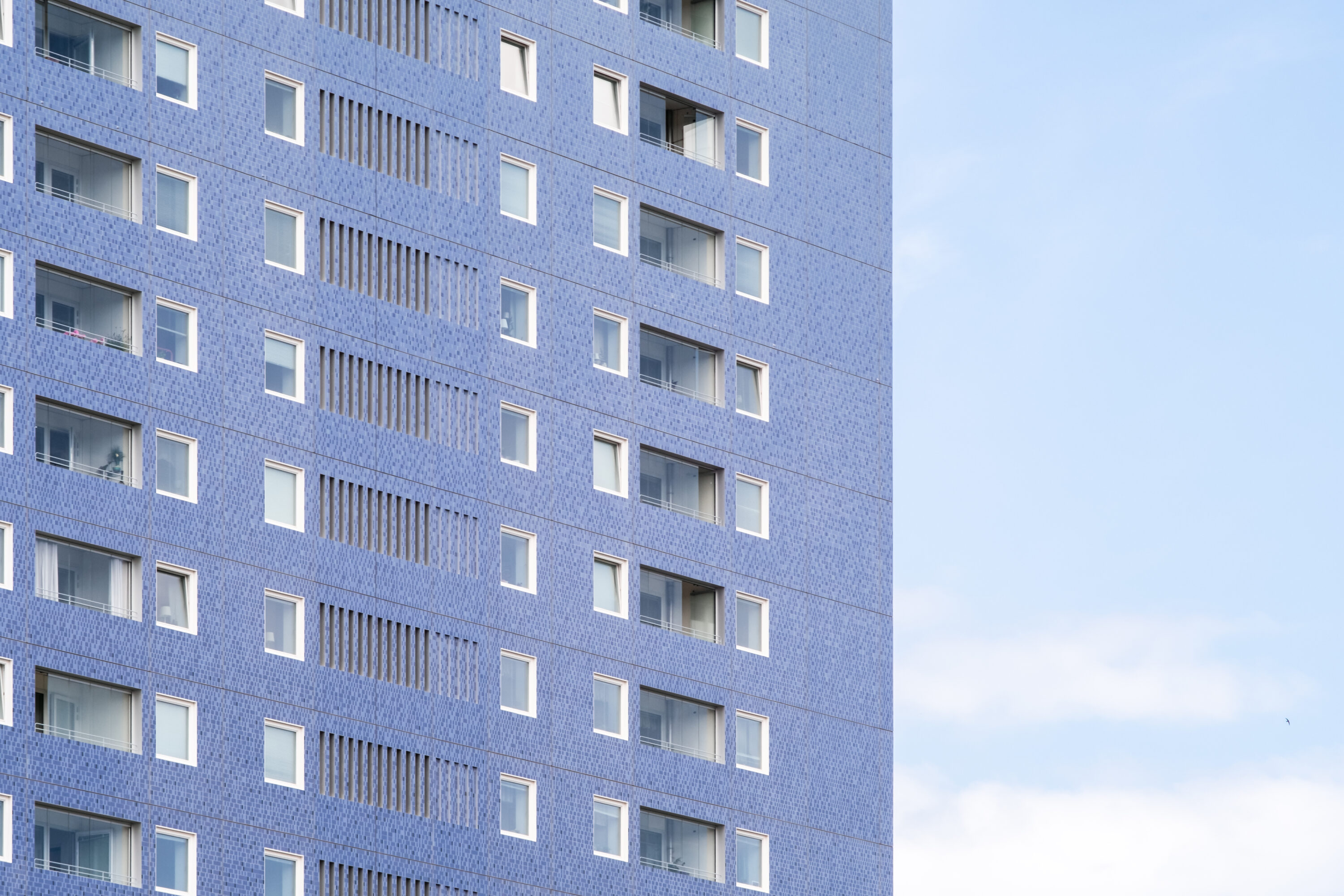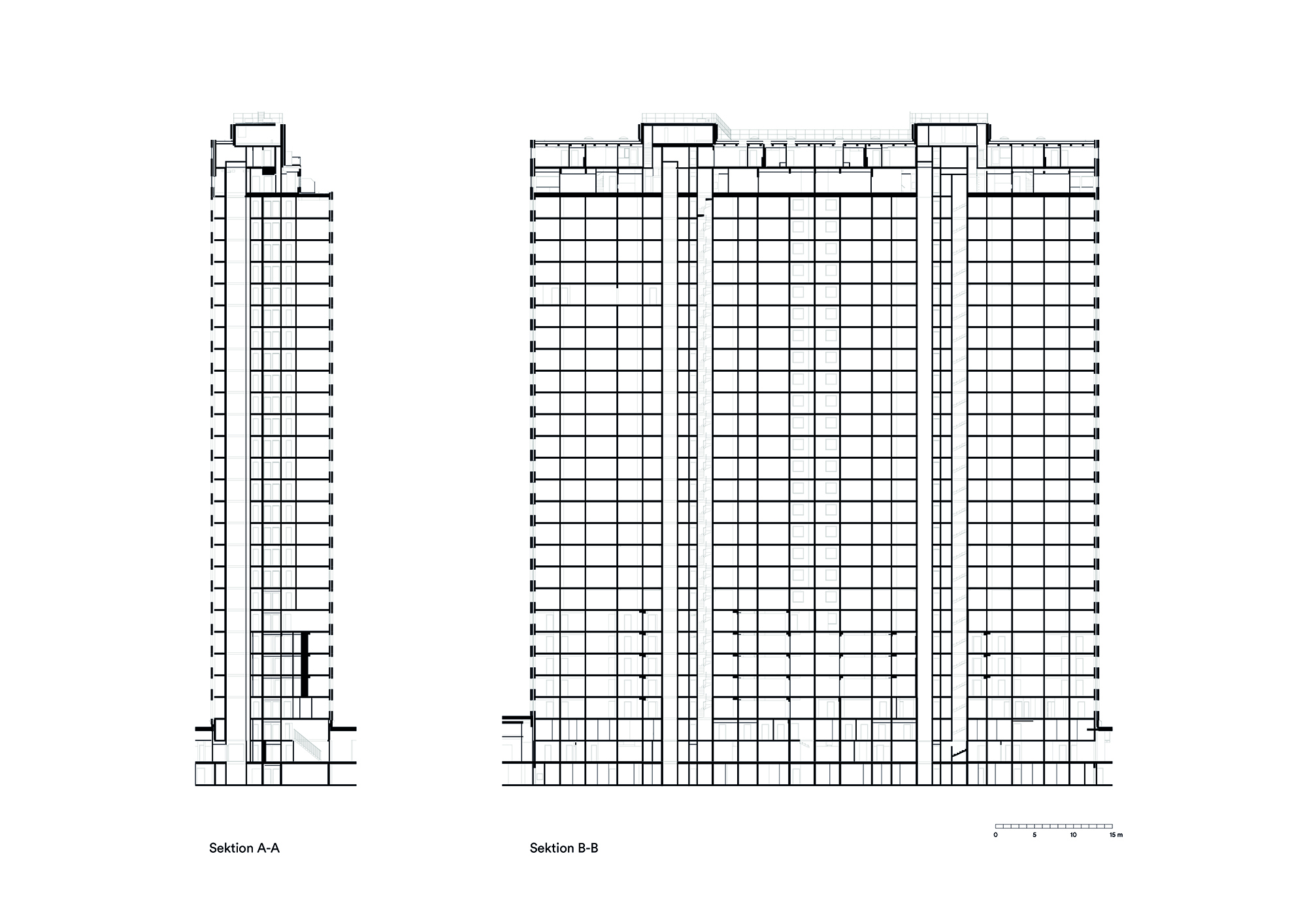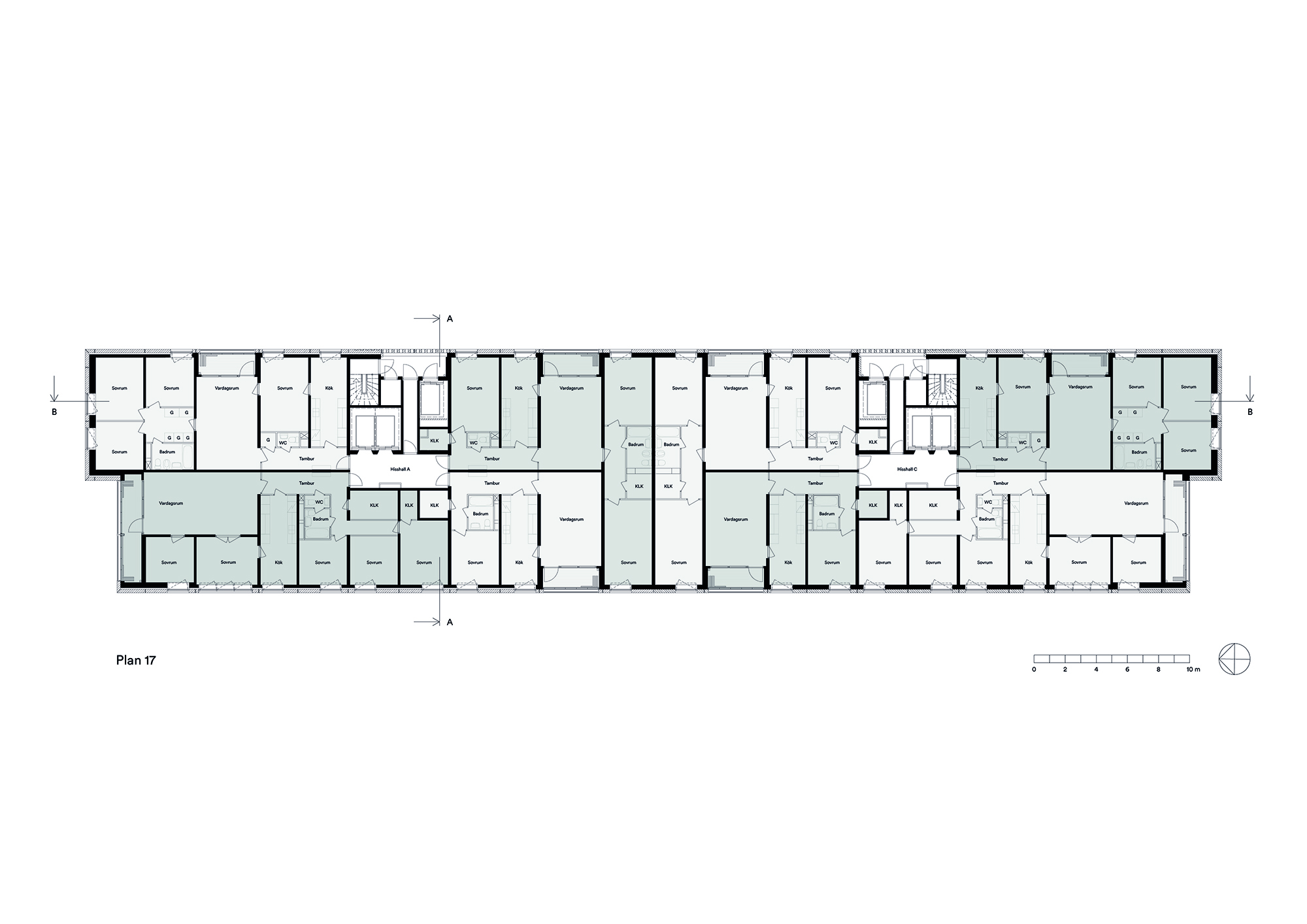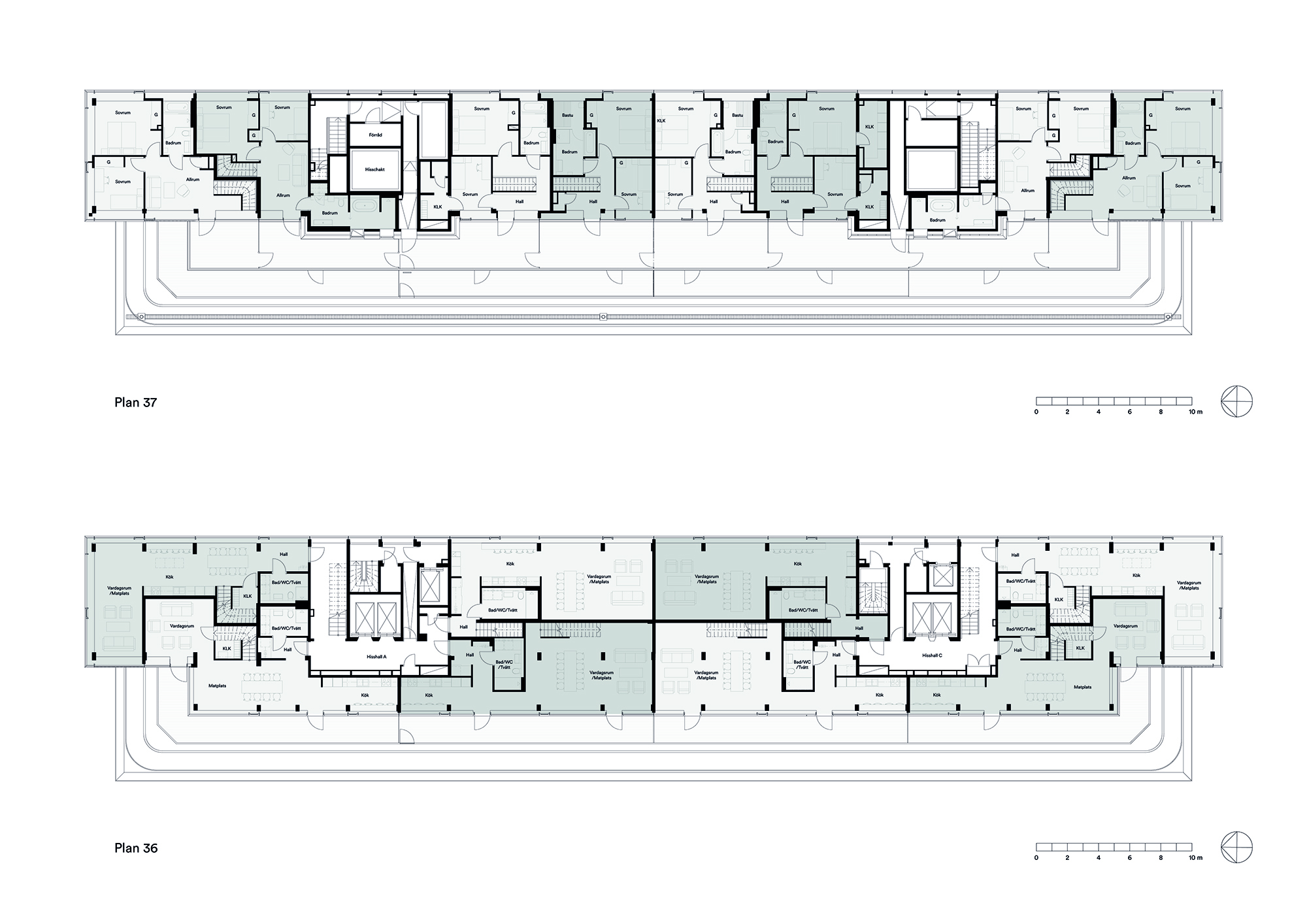Kronprinsen
Kronprinsens höghus is the first completed part of a redevelopment of the entire city block. The inner courtyard will be reclaimed as a recreational area for residents and will be upgraded with vegetation, lighting and social areas for all ages, from pre-school children to pensioners. Kronprinsen comprises more than 750 apartments from one to six rooms and kitchens. The variation in apartment size provides good conditions for a mix of different housing constellations.
Kronprinsen from 1964 is one of Malmö's tallest buildings and most important landmarks. The building's characteristic facade has few equivalents in contemporary architecture in Sweden. It consists of nearly two million mosaic tiles in varying shades with a gradual transition from dark to light. The windows are almost square in size, except in a few cases where they are replaced by window bands to break the monotonous grid of the prefabricated facade.
Client Hugo Åberg was inspired by the Palazzo Pirelli in Milan, whose glass mosaic façade was perceived as shimmering. FOJAB has now renovated the worn façade. Using a new method, we have been able to recreate unique architectural values and extend the life of the building so that it can delight the people of Malmö for another fifty years.
The starting point for the renovation was to retain the building's character, streamline the patterning of 1.9 million clinker tiles and minimize disruption to tenants during construction. Together with the collaborative contractor NCC and Fasadglas, which manufactured the façade elements, FOJAB developed a system for installing a completely new façade, including windows, on top of the old one. Only when the new facade was in place were the old windows taken down.
The new ceramic tiles has been developed in collaboration with IFÖ, which through its archive has helped with original recipes for colors, glazing and execution. In the original facade, there were some visible joints in the pattern, but on the new facade, the design and placement of the clinker sheets have been optimized using a specially written algorithm and a completely seamless blue gradient has been created from base to top. Sills, sills and cills are made of extruded aluminium profiles, which are designed to minimize gaps that would otherwise create shadowing on the façade.
The top floors have been converted to residential use, which places new demands on the window layout. An additional band of windows above the existing one is a horizontal marker of the building's upward termination.
One of the most important sustainability tasks facing property owners, the construction industry and the city is to preserve buildings from the 1950s, 1960s and 1970s. Relying on new construction in a rapidly growing city is not economically, socially or climatically sustainable. With the Crown Prince, we took on the most difficult challenge directly. We show that it is possible to renovate our old buildings, even if they are worn out and the challenges are complex, and refine them for a new age.
The Crown Prince has won a prize for Facade of the year.
Read more about how we work with computational design within FOJABcode.
